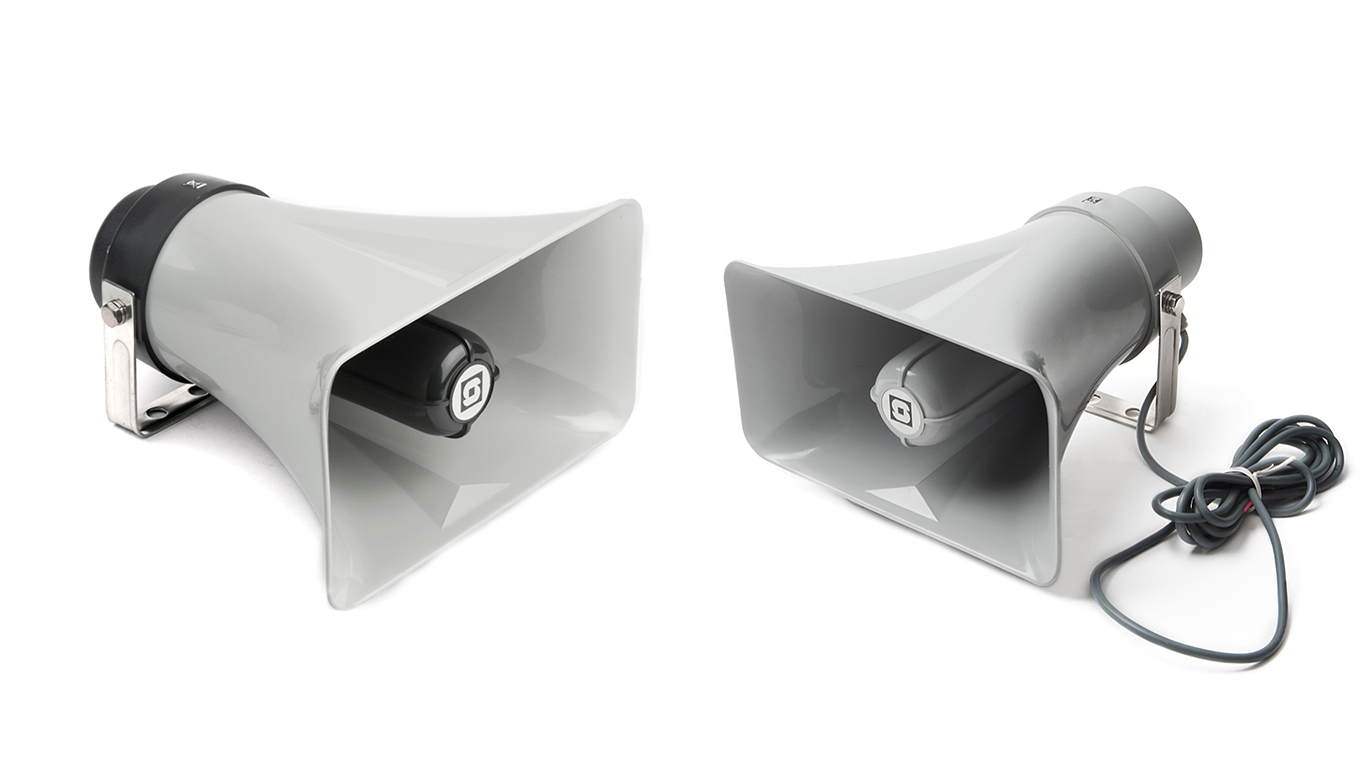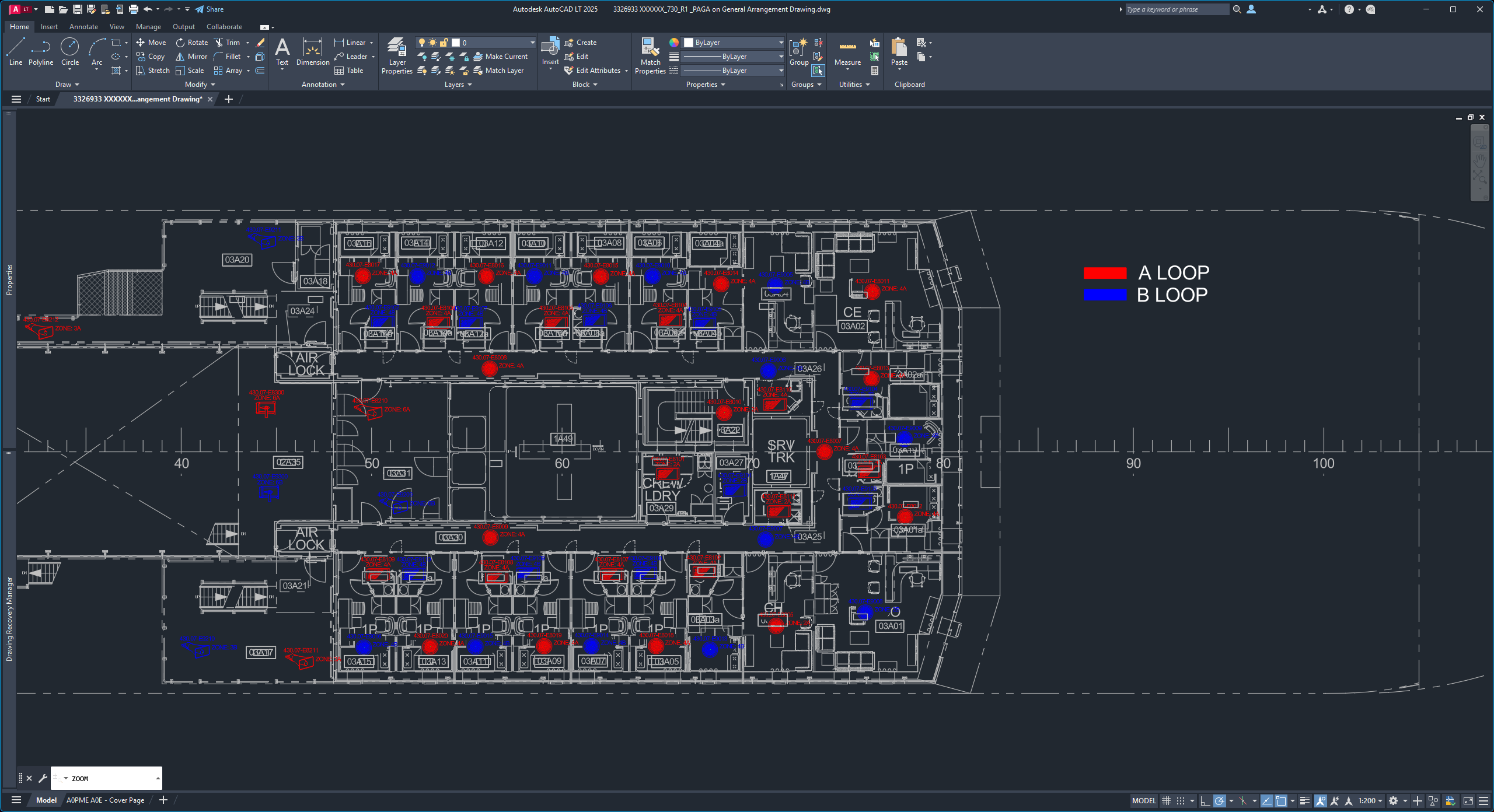Loudspeakers in Maritime and Offshore Environments
In marine environments, whether aboard a vessel, in the midst of an offshore wind farm, or on an oil platform, maritime PA speakers are essential for onboard communication, delivering emergency messages and alarm signals.

Imagine being on an offshore platform or on a marine vessel during a storm, where clear communication can mean the difference between order and chaos. In marine environments, PA speakers aren’t just audio devices—they’re lifelines.
Standard Equipment vs. Maritime PA Speakers
Can you simply install standard loudspeakers on a vessel and expect them to work? Only if they’re for entertainment, not critical communication. For a reliable and effective notification system in marine environments, PA solutions must comply with strict regulatory requirements, including the Safety of Life at Sea (SOLAS) convention and International Maritime Organization (IMO) standards. These ensure that loudspeakers function in high-noise environments, integrate with onboard emergency systems, and maintain operational integrity in extreme conditions. Without compliance, audio systems risk failure in emergency situations, jeopardizing both crew safety and regulatory approval.

Exploring Speaker Requirements
To ensure equipment does not fail in situations where speech clarity and timely announcements are crucial for safety and asset protection, three essential features are required:
- Durability: Marine loudspeakers must be designed to withstand vibration and extreme weather conditions such as humidity, saltwater, and both high and low temperatures.
- Certifications: The equipment must meet applicable marine safety standards, with additional explosion-proof (EX) certification required for installations in hazardous areas.
- SPL Considerations: If announcements are drowned out by engine noise or rough weather, crew members may miss critical safety instructions—leading to delays, confusion, or even life-threatening situations
Types of Loudspeakers
Depending on usage conditions, environmental challenges, and installation type, several types of equipment are available:
- Outdoor loudspeakers: Designed for installation on open decks of vessels or offshore platforms, these solutions feature durable casings and are weatherproof with high SPL.
- Indoor loudspeakers: Easy-to-install systems for use in enclosed spaces with low background noise, such as corridors, cabins, and control rooms.
- EX-certified speakers: Solutions approved for use in hazardous zones to prevent ignition risks.
- Cabin & bathroom speakers: Compact and waterproof designs suitable for installation in high-moisture areas, such as bathrooms or cabins.
Ready to optimize your vessel’s PA system for maximum safety and performance? Explore our full range of maritime loudspeakers here
100V Line vs. Low Impedance Loudspeakers: How to Choose the Right Model?
To select the most suitable solution, our team of engineers analyzes all aspects of the project, including the size of the installation and the required number of loudspeakers.
The advantages of 100V speakers include enhanced reliability, the ability to cover large vessel areas, and the option to use multiple speakers in a single line, making this solution ideal for PAGA (Public Address and General Alarm) installations.
| Feature | 100V Line Speakers | Low Impedance Speakers |
|---|---|---|
| Best for | Large vessels areas (PAGA) | Localized applications |
| Scalability | High (Multiple Speakers) | Limited coverage |
| Power Efficiency | Optimized for long runs | More power-intensive |
| Installation | Daisy-chained, efficient | Direct-wired connections |

On the other hand, low-impedance loudspeakers meet the requirements for systems used in localized applications, such as talkback systems or external intercom speakers.
Location Matters: How Zenitel Plans Speaker Placement
Every project is unique, which is why our engineers conduct a detailed assessment of the installation to determine the number and models of required equipment. Our team uses GA (General Arrangement) drawings to plan speaker locations.

The process includes identifying indoor and outdoor areas, as well as spaces like stairways, rooms with high noise or humidity levels, and EX-zones. Based on this analysis, we create a plan that ensures even sound distribution for clear announcements in all necessary coverage areas.
With this structured approach, Zenitel ensures that every speaker is positioned to maximize audibility, prevent signal loss, and fully comply with international maritime safety standards—keeping crews informed and operations running smoothly.
